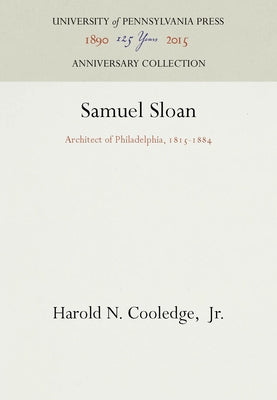Before you leave...
Take 20% off your first order
20% off
Enter the code below at checkout to get 20% off your first order
Discover summer reading lists for all ages & interests!
Find Your Next Read

Samuel Sloan: Architect of Philadelphia, 1815-1884 is a comprehensive study of one of America's most influential architects. Sloan created the designs that have become prototypes for many public buildings. His plan for the Hospital of the Protestant Episcopal Church in Philadelphia served as the model for American general hospitals, and, with Dr. Thomas S. Kirkbride, he created the model for mental hospitals in the United States. Sloan was also an innovative designer of public schools, creating the "Philadelphia Plan" of schoolhouse design, which came to be internationally known and widely used.
Sloan helped to shape the architecture of his time not only through the buildings he designed but also through his writings. He published several major pattern books, covering every aspect of the architectural profession from carpentry to furnishings. One of these, The Model Architect, went through five editions and was among the most widely distributed works of its kind in the history of nineteenth-century architectural publishing. As a result, Sloan's influence on the architectural environment of nineteenth-century America is so pervasive that a full accounting of the works which can be traced back to his books is almost impossible. From 1868 until 1871 Sloan also produced The Architectural Review, the first periodical in the United States devoted exclusively to architecture and its related arts and crafts and the unofficial organ of the reconstituted American Institute of Architects. In Samuel Sloan, Harold N. Cooledge, Jr. examines the social, economic, and environmental factors that influenced Sloan's personal and professional character and includes a consideration of the theorists and tastemakers whose ideas influenced Sloan's attitude toward architectural theory and practice. Cooledge then presents a chronological biography in which the majority of Sloan's important commissions are considered in detail, and as much information about his private life as could be documented is given. The book concludes with a detailed catalogue of Sloan's work. Samuel Sloan: Architect of Philadelphia 1815-1884 will be of value to architects and to scholars interested in art history, social history, and American studies.Thanks for subscribing!
This email has been registered!
Take 20% off your first order
Enter the code below at checkout to get 20% off your first order